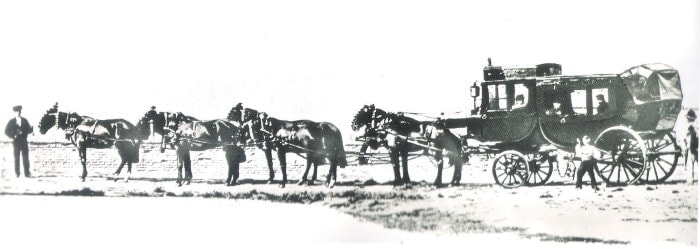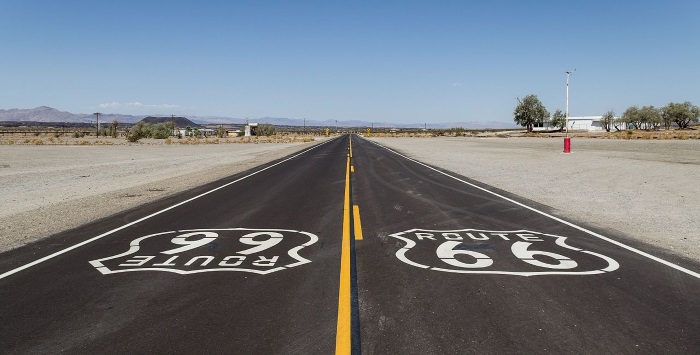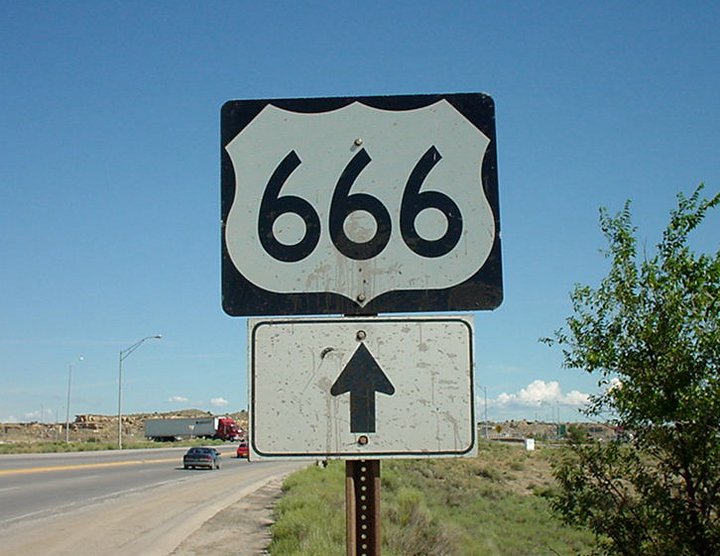
An old footpath, the devil's highway, or how engineering ended half a century of damnation
25 of January of 2019
“The devil’s out of here. We say goodbye and good riddance.” It was 2003 when Rhonda Faught, then the Transportation Secretary of the U.S. state of New Mexico, put an end to a damned highway with these words. This is how the columns of the Albuquerque Journal tell it. Faught was triumphant at the ceremony where Route 666, known for decades as the devil’s highway, was renamed Route 491.
A name change never meant so much. The number of accidents clearly decreased. Reports of strange events stopped coming in. All of a sudden, the fate of this highway, built along an old footpath between Mexico and the United States, had changed. History is not fiction. But it does have a much more rational explanation.

A path for natives and traders
We have already talked about how old paths became paved. The paths carved by centuries of footsteps gave way to narrow roads and stagecoaches, rudimentary trains, and, along with the internal combustion engine craze, highways. The history of Route 666 is no different. Before its name was associated with the number of the beast (according to the Bible), this path was known as the Old Spanish Trail.
This old road, or more accurately, group of roads, linked settlements in the areas that are today Colorado, Utah, New Mexico, Arizona, California, and Baja California. It was heavily used during the first half of the 19th century since it was already one of the main trade routes between Mexico and the United States. Around the middle of the century, the war between Mexico and the United States put new borders on the map, and the road fell out of use. Above all, its path among mountains, canyons, and rivers made it impractical.
Today, the Old Spanish Trail has its own association, and it is recognized as one of the United States’ protected historic routes. Part of its route was incorporated into the national highway system in the 1920s. In 1926, the main route would come to be called 666, according to Richard F. Weingroff. One number was added to identify it as the sixth branch of Highway 66.
Since then, the highway runs through the states of Colorado, Utah, and New Mexico, as well as Navajo Native American reserves and Ute Mountain. It even passes by some of these tribes’ sacred sites. So when does an old road, used for decades and named by chance in a numerical system, become damned?

An asphalt curse
From 1985 to 1992, 22 people were fatally hit on Route 666. In 2001, 15 died in traffic accidents. In 2002, 11 died. In the 1990s, the highway was blacklisted as one of the 20 most dangerous roads in the United States. The numbers were repeated in newspapers and in the speeches of local politicians in those years. For some of the population that held Christian beliefs, the cause of the fatalities was obvious: the highway was damned.
There was no denying it. The problem was that the devil was in charge of those numbers. The fatality rates were related to a very specific segment of highway. A stretch a few kilometers long that passed through north of Gallup, New Mexico. The rest of the highway, especially the stretches in Colorado and Utah, had accident and fatality rates below the national average.
Even so, these figures linked to the three sixes were enough for the legends to spread. Stories of skin-walkers, mythical beings from Navajo culture that could turn into animals, and sightings of hellhounds that chased after cars in the most isolated parts of the highway began to crop up. There were even reports of demonic trucks covered in flames that pursued travelers.

Can a name change bring an end to the problem?
Authorities said enough was enough. According to the New York Times, after analyzing the data, the governors of Colorado, Utah, and New Mexico decided to launch a campaign to change the highway’s name. So, in May 2003, their wish was granted, and Route 666 became Route 491. The first result was immediate, but it had nothing to do with the curse. The signs with the three sixes started to disappear from the highway and appear on auction sites.
Shortly after the name change, two more fatal accidents with six victims were reported, according to the Albuquerque Journal. That was when the legends about the damned number began to disappear and voices that had insistently repeated the same message for years began to be heard: the highway went along a dangerous route, was poorly asphalted, and had too much traffic for its quality.
So authorities changed their strategy. Since 2003, several sections of Route 491 going through New Mexico have been redone. They have built two lanes in each direction, the route and pavement have been improved, and elevated walkways for pedestrians have been installed in the zones with the heaviest traffic.
According to the state’s Department of Transportation, numbers have drastically decreased in the stretches where improvements have been made. In areas where the highway is still an old, narrow, two-lane road, the accident rate is almost four times the national average. There is barely any trace of legends and damnation – outside of souvenir shops.





There are no comments yet